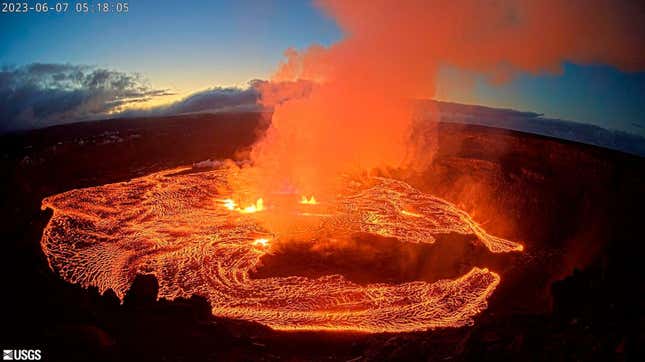
The Kilauea volcano began erupting on Wednesday morning in Hawaii, with the early glow of its burning hot lava captured on webcam by an observatory.
The Hawaiian Volcano Observatory first detected a glow in the Kilauea summit webcam images at 10:44 a.m. ET (4:44 a.m. local time) on June 7, which indicated the volcanic eruption. “The opening phases of eruptions are dynamic,” the United States Geological Survey (USGS) wrote in a statement. “Webcam imagery shows fissures at the base of Halemaʻumaʻu crater generating lava flows on the surface of the crater floor.”
USGS changed Kilauea’s volcano alert level from “watch” to “warning,” while still emphasizing that its volcanic activity remains confined within Hawaii’s Volcanoes National Park. The state agency is monitoring the situation, but has so far indicated that there is no risk to populated areas. A live feed from the observatory’s webcam shows the developments from the crater.
Kilauea is by far one of the most active volcanoes in the world. In May 2018, the volcano oozed 0.2 cubic miles of lava over a period of four months, destroying hundreds of homes and displacing thousands of people. The volcano’s biggest eruption in nearly 200 years transformed the surrounding landscape, adding more than a square mile of new land to the coast.
Related article: The 18 Most Dangerous Volcanoes in the United States
Over the past 200 years, the volcano has erupted every two to three years on average, according to USGS. However, Kilauea’s most recent previous eruption took place from January 5 to March 7, 2023, which is relatively brief compared to the one before, which lasted from late January 2022 to December 9, 2022. USGS will continue to monitor the active volcano in the meantime.






